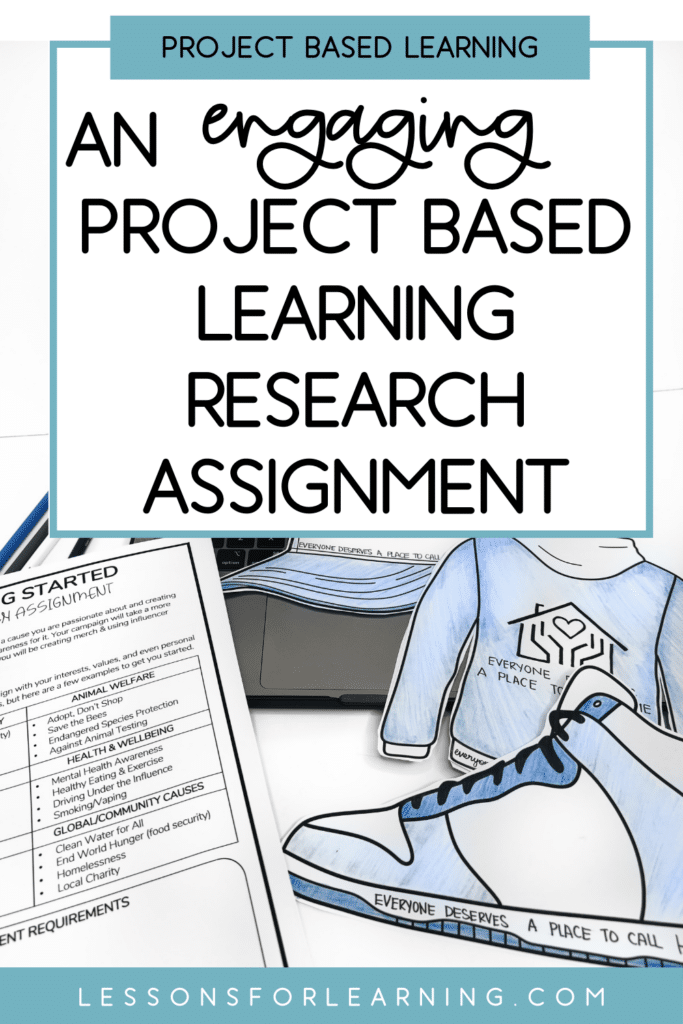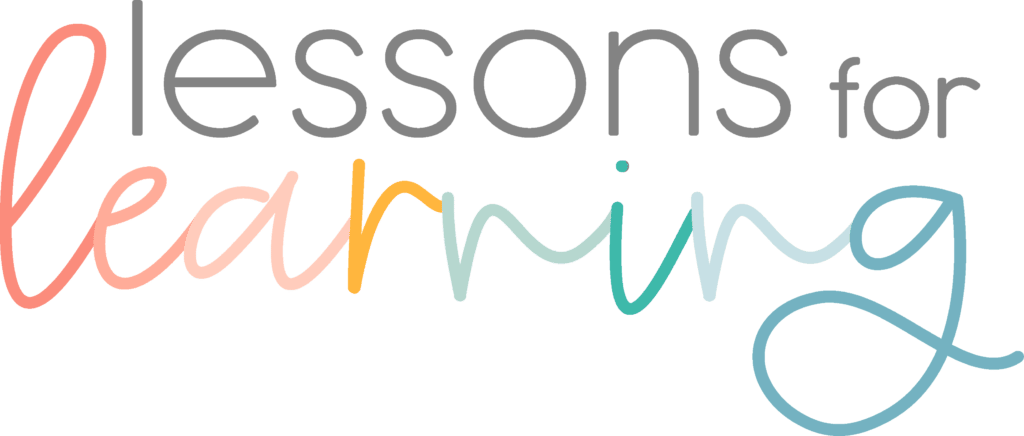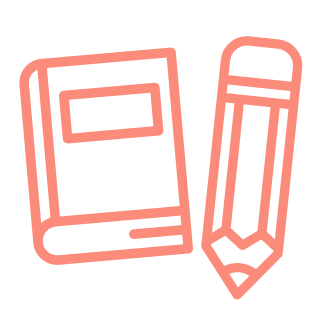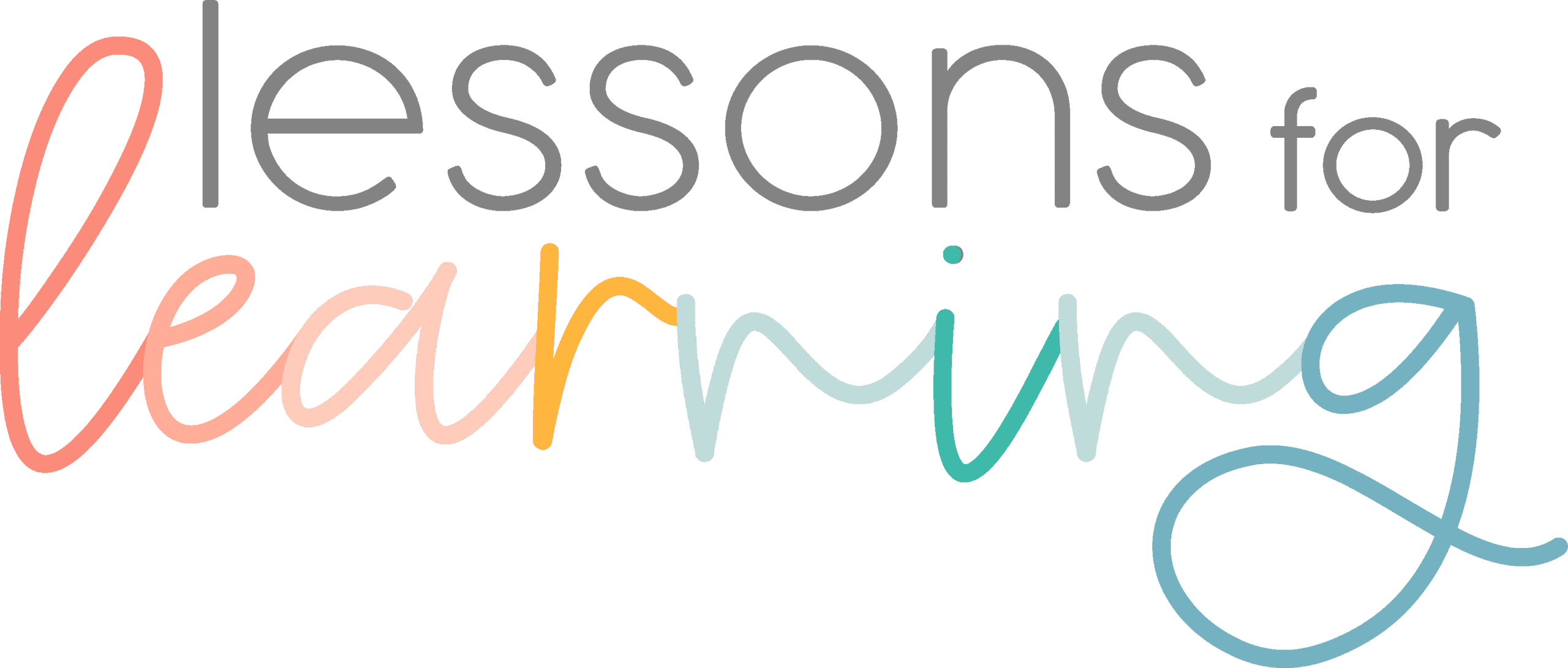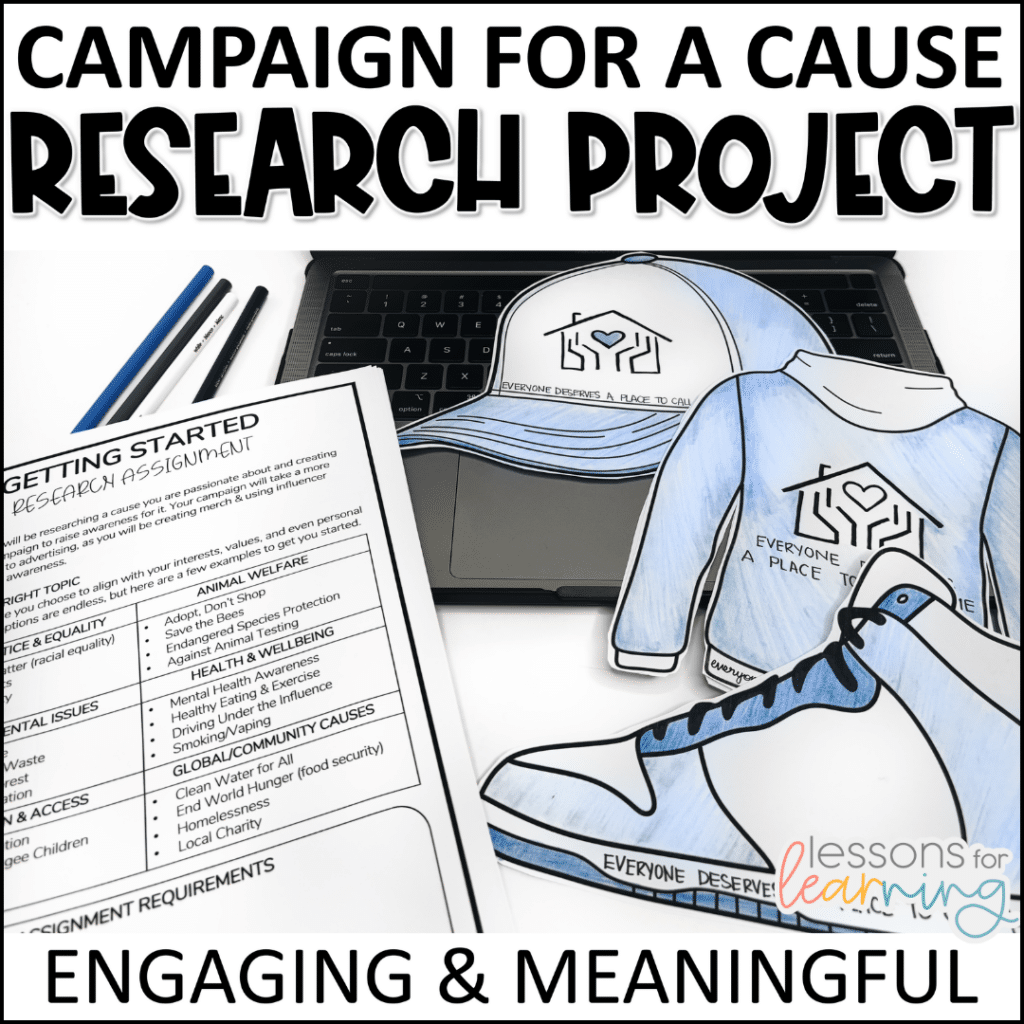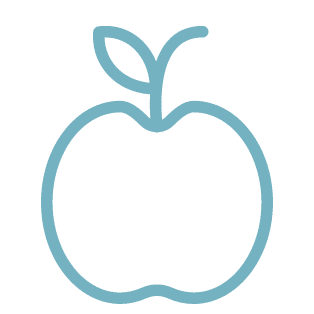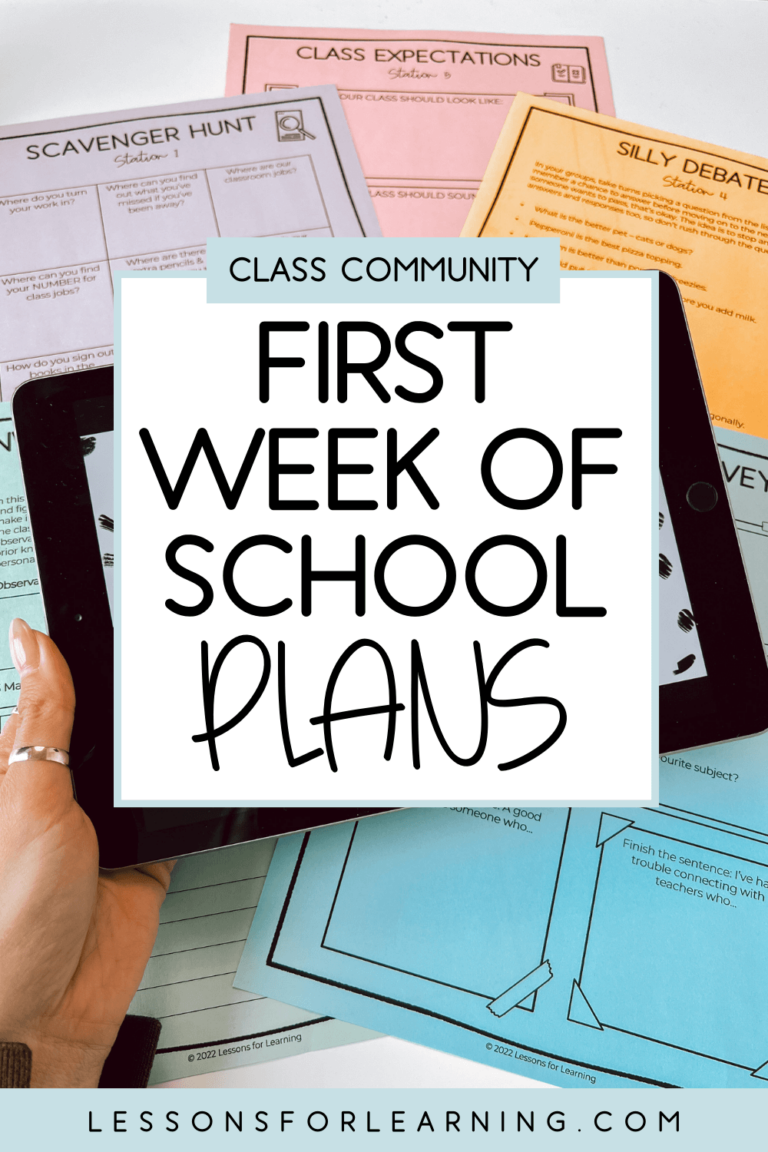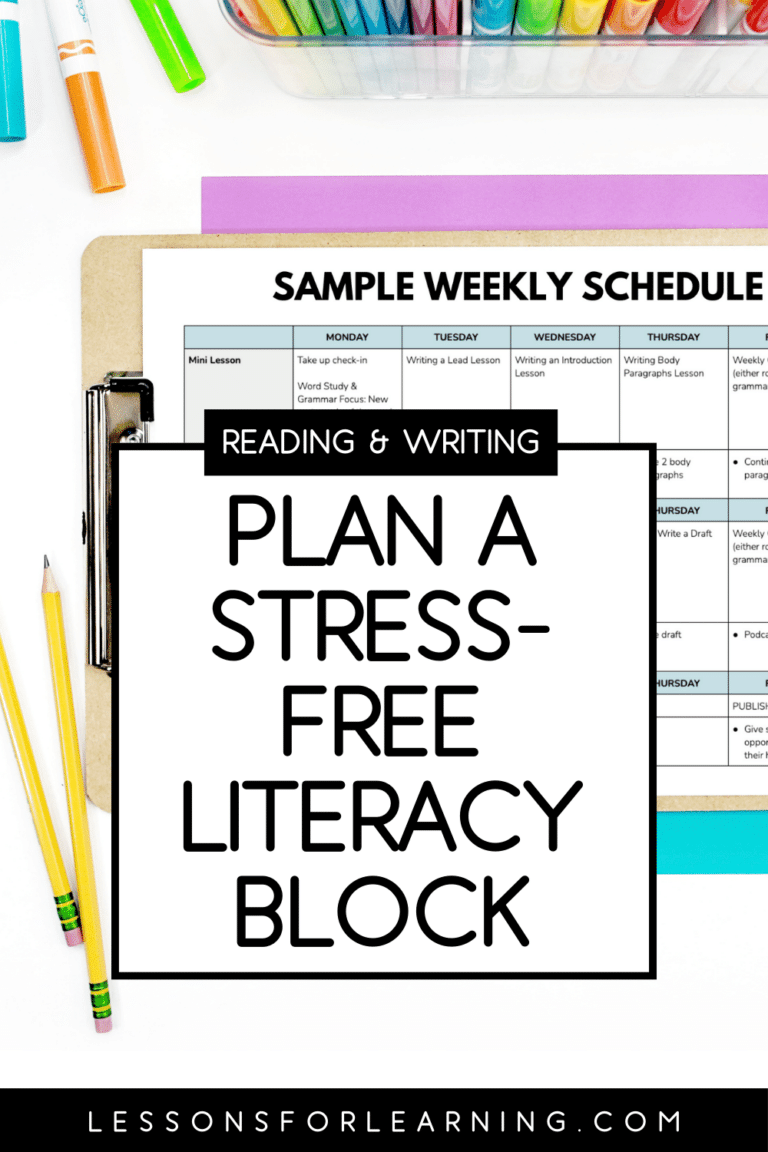I am always on the lookout for opportunities for students to make connections between what we are doing in class and the wider world beyond out classroom walls. This is where project based learning research assignments are absolutely the best choice!
Project-based learning (PBL) makes research assignments more meaningful and engaging for students. Beyond just developing and applying essential skills, students are able to dig deeper into real-world issues, notably issues that are of interest to them! Plus project based learning research assignments incorporate student choice and voice because they are student-centered learning opportunities.
This post is all about a ready-to-use PBL research assignment with practical tips on making PBL effective in any classroom.
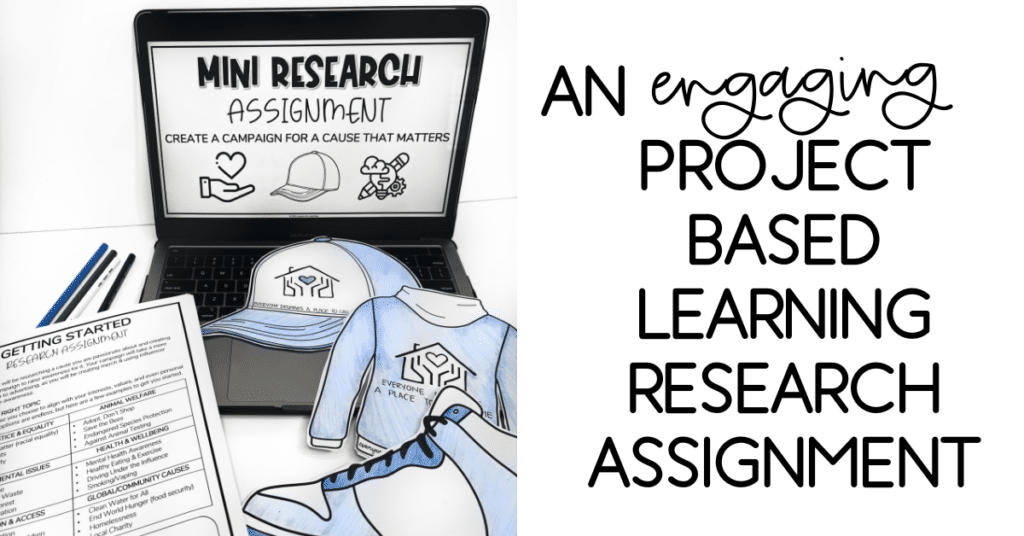
Why Use Project Based Learning Research Assignments?
Using project-based learning for research is a great engagement option for students. One of the highlights of PBL is that it connects students to real-world applications through a directed question that allows them to pursue something of interest to them.
Teachers create and provide the framework for the assignment but then students are able to tailor elements within that framework to their own interests and skills.
And skill development is one of the main benefits of project based learning research assignments. The three main ones that PBL help to develop and refine are critical thinking, collaboration, and problem solving.
Students will develop their critical thinking skills by examining different materials and deciding what they have researched. They have to make choices about what it most relevant and what is most reliable in what they find online – a skill with ripple effects beyond this project.
There are a ton of opportunities for work to be completed in pairs or small groups to encourage collaboration. While working solo is an option if that is a preference for you or the student(s), you can still incorporate collaboration through peer discussions or even peer editing.
The final skill that is one of the most important in 21st century learning that project based learning research helps to develop is problem-solving. This skill has students learn to prioritize, find the right tools for the task, use relevant technology to complete tasks, and all the while to do so with a creative thought process that has them encounter and address potential problems.
While completing project based learning research, students will ‘fail’ at times and this is part of the process and provides rich learning opportunities for students along with encouraging a growth mindset. It’s not a matter of just “this didn’t work” but rather a matter of “this didn’t work this time. How can I make it work next time?” And this is valuable learning!
Introducing the “Create a Campaign for a Cause” PBL Assignment
If you’re looking to have your students develop the aforementioned skills and pursue a project with a real-world focus on causes that students are passionate about then you’ll want to do a mini research project to Create a Campaign for a Cause.
This project based learning research assignment has opportunities for students to work on writing and media skills while being creative too. They design a campaign and choose an endorsement strategy, which incorporates a real bit of “moderness” to the assignment. We are living in a world of influencer marketing, merch, consumerism, etc. so this is kind of the new way of marketing, which makes this project based research assignment a great media literacy connection.
To implement this in your classroom, for younger students you will need to scaffold the different prats. Using graphic organizers and the strong structure of the assignment, you can complete mini-lessons with a specific activity. For example, paraphrasing or how to put research into their own words will be a key element for students to tackle.
For older students you can complete this project based research assignment as more of a mini-project. This is a great way to start with something smaller to get them ready for a bigger research task they will need to do later in the year. In this way the scaffolding is through each part of the process and addressing needs for support throughout the process.
Benefits of the “Create a Campaign for a Cause” Assignment
This Create a Campaign for a Cause project based learning research assignment has so many benefits for students.
The first benefit is that students take ownership of the project. Students can direct their learning by selecting a cause that resonates with them. Have a list of options but provide some time for students to research causes that are related to ideas or concerns that are personal to them. If a student is concerned about the environment, they can investigate which causes exist locally or nationally and pick one to fit the assignment.
Another benefit is this project’s focus on critical thinking and media literacy. Designing a campaign helps students analyze effective messaging. Who is my intended audience? What imagery as well as words and phrases will resonate with this audience? What looks visually appealing but is still meaningful?
Finally, students develop collaboration and communication skills. Students can work together or better yet, encourage teamwork and sharing ideas through group discussions. This can be part of the problem-solving process since two heads are better than one!
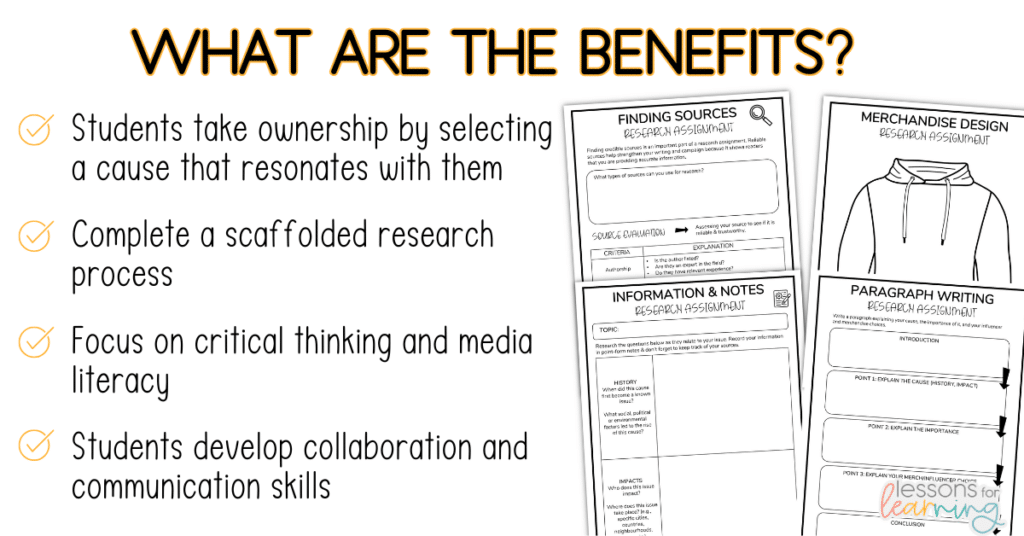
How to Guide Research in PBL Assignments
The most challenging aspect of project based learning research assignments is the research process.
Finding Reliable Sources
There are a few approaches to use with finding reliable sources that are part of the evaluation process for content.
With younger students, you may want to provide a list of websites for them to use or books from the library. Limiting some of the choices might make a project like this easier in Grade 5 so you can monitor and support the research process more closely.
Using the 5Ws is another way to find a good source since credible sources usually answer “Who” created the content, “What” its purpose is, “When” it was published, “Where” it’s hosted or found, and “Why” it exists (to inform, sell, entertain, or persuade).
For older students, the CRAAP Test (Currency, Relevance, Authority, Accuracy, Purpose) is a good approach.
Currency: “Is the website up-to-date?”
Relevance: “Is it helpful for my topic?”
Authority: “Who wrote it?”
Accuracy: “Is it true?”
Purpose: “Why was it made?”
Take notes during research
Conduct a mini-lesson on what a “research period” should actually look like. Model exactly what you would type into google, which website you would pick to start with, how you would “skim” the article/text, what you would include in your notes, how you would write it in my organizer, and so on.
This might seem boring BUT is very helpful for students to actually hear you talk through this process as many kids don’t know how to do this. To spice up this process, you might make it more of a choose-your-own-adventure approach by asking would you do this or that at certain stages of the process.
Synthesizing Data
Once students have collected their data encourage students to analyze and make connections within their research. Rather than just collecting the facts, your grade 7 and 8 students can figure out the similarities and differences, which can help to organize the information they have gathered. This is also when students will paraphrase what they have found in order to work on the final products in the Create a Campaign for a Cause project based learning research assignment.
Conclusion
Project based learning research assignments contribute to students’ skills development in a variety of areas. There are so many benefits to including assignments with valuable real-world connections.
If you’re looking to save time, make sure to check out this all-in-one project based learning research assignment solution. This mini research project will have students researching a cause and creating a “marketing” campaign to raise awareness for it. This real-world application will engage students as they dive into the world of modern marketing: researching a cause, creating slogans, designing merchandise, choosing an influencer/celebrity to help market their campaign and writing a final paragraph summarizing their findings.
For more ideas about including project-based learning in your classroom check out these posts:
- How project based learning can save you time and increase engagement
- End of year projects ideas to increase engagement
